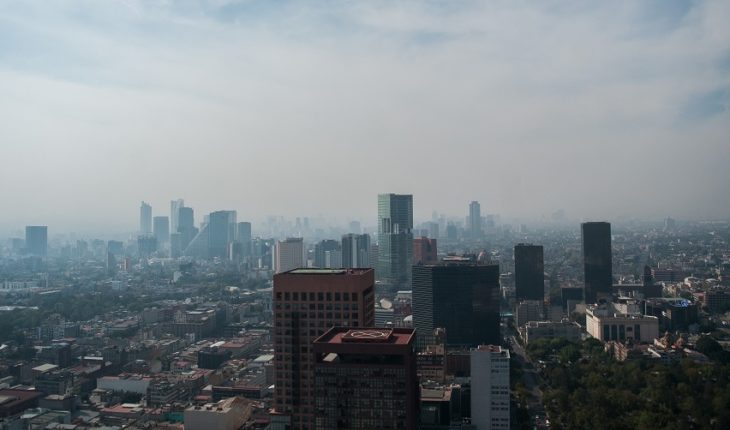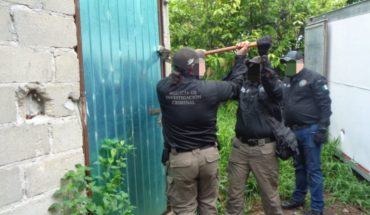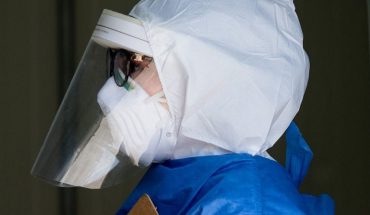He began to spit out phlegm with blood, was burning in the throat and bled him nose. It was January of 2019 when Ximena Galicia had to return to Mexico and wondered why those symptoms. At medical review, the doctor said that I had no picture of infection, “surely the pollution is affecting you”, he explained.
A year earlier, Ximena had been diagnosed with multiple sclerosis and lupus; that coincided with the time that lived abroad, and now that he returned to Mexico noticed its neurological symptoms worsen: “there I felt well, but here I feel tired, any activity I exhausted, I have to go several times to the emergency room by the symptoms Neurological… such as epilepsy, it worsens”.
Despite this, Ximena does not see a possibility moving to another part of the country to escape the poor quality of the air in the city of Mexico. “I see my disease (multiple sclerosis and lupus) at the National Institute of medical sciences and Nutricion Salvador Zubiran, should see hospital quality for my treatment on another website and is complicated.”
Read: Not only in CDMX there is poor air quality; a year killed 14 thousand 288 people for this cause in 20 cities
With 27 years, Ximena is one of the 12 participants in the amparo presented on April 24 against the head of Government, Claudia Sheinbaum, and the local Ministry of the environment (Sedema), for damages to health because the poor condition of the city’s air.
It’s official: we have succeeded in bringing @ClaudiaShein and its Ministry of environment to trial. They will have to prove that their vehicle verification measures not decomposed the quality of the air in the city of Mexico. The burden of proof, in environmental law, touches them.
-Bernardo Bolaños (@BernardoBolanos) 25 April 2019
Another of those affected is Elisa Blengio, a graduate in political sciences of the UNAM student. “There are days when I wake with much dizziness, I can hardly balance…” the problem is not my body, is the environment in which I developed”.
At the beginning of 2016, Elisa began to have allergies and respiratory problems. “The doctors gave me antihistamines, told me that it was an allergy-friendly”. Mid year, moved to the center of the city and found a sharper point of rhinitis. “I started to let out, I stopped exercising, could not continue with the same pace, he injected me with cortisone and I was ridding the picture but I have not recovered me.”
A year later, doctors suggested him to continue with taking antihistamines, the use of a spray, and began to perform a myriad of studies but no disease was found.
In 2018, stopped listening on the right side because of side effects that produce antihistamines. This year the doctors from the National Institute of rehabilitation have informed him that annoyance has become a middle-ear vestibular dysfunction, which can be disabling, and which may cause dizziness and headache of constantly.
An estimate, Elisa estimates that it has spent 60 thousand pesos in the last 3 years between drugs and doctor visits. Elisa is successor of the ISSSTE, but when he went he was given an appointment within 3 months and therefore decided to deal in particular, and later integrated into the service of the National Institute of rehabilitation.
Both are involved in the application for amparo, after seeing a Tweet from April 10, where the Professor of environmental law at UAM, Bernardo Bolaños, and the lawyer litigator, Gunnar Hellmund, said they would help legal and free of charge to citizens affected by poor quality the air in the nation’s capital.
If you live in CdMx and had a respiratory disease recently, perhaps you can represent you legally and free of charge in a trial. Send me a DM.
-Bernardo Bolaños (@BernardoBolanos) April 10, 2019
The seven shelters were issued before the power Judicial from the city of Mexico and seek that the head of Government, Claudia Sheinbaum, amend the current regulation of vehicle check. Although they do not rule out start another trial for liability for damage, and demand compensation for some patients.
From July 1, 2016, the Government of the city of Mexico and the Sedema implemented a verification system vehicle which included the measurement of emissions of fine particles, the review of the physical and mechanical conditions of vehicles and verification on-board diagnostic (OBD), which measures through the computer of automobile pollutants critics.
However, after the arrival of the new Government of Claudia Sheinbaum, applies only the OBD test. Bernardo Bolaños explains that with this modification to the regulation of vehicle verification “were thousands of cars to circulate, because those who had hologram 1 now have 0, and can lead whenever they want”.
On the subject, the Government of the city of Mexico explained that despite the changes being applied which says Mexican law, establishes the use of OBD test for post-2006 cars and consideration of emissions for older cars.
Claudia Sheinbaum supported that version. Friday, April 26 said in a press conference that “is is serving exactly with what the standard says” and which is working to improve the verificentros and various measures to improve the air quality.
“We’re working secretariat of environment, mobility, including Central de Abasto, different areas of the Government on a program of improvement of air quality in a comprehensive program of improvement of the environment in the city of Mexico. We are working on this, there has been a series of environmental contingencies, today saw an analysis of how it is associated with temperature, speed of air, etcetera, etcetera.
(…) “to the next semester we will make a series of measures that will help us to improve the quality of the air as occurrences, but really in a planning scheme”, explained the head of Government.
Citizens are protected under two items. The first article, which States that every person shall enjoy human rights established in the Constitution and the international treaties to which Mexico is party, as well as guarantees of their protection, the exercise of which may not be restricted or suspended.
And the fourth article, which establishes the right of every person to enjoy a healthy environment for their development and well-being.
Bolaños explains that “when one has an acquired right is it does not deprive citizenship again. In 2018 we had an acquired right to healthy environment, cars had to pass three tests, remove these measures increasing suspended particles and ozone in the city”.
On Twitter, hundreds of people contacted Bolaños and Hellmund to avail themselves, but only 12 people participated in the 7 protections because they had a medical diagnosis and were willing to sign. Participants include cyclists sick, people with chronic illnesses or children affected by the latest environmental contingencies.
Plaintiffs seek that a district judge ratifies in favor, and demand the Government void new vehicle verification regulations.
In 2019, 109 days with poor air quality
In the 117 days that have elapsed from the year (with cut to April 27), 109 days have presented higher emissions to 100 points in any of the pollutants 5 used as a criterion, which indicates a health risk for people with chronic diseases respiratory diseases, children and the elderly.
According to the direction of monitoring of the air in the city of Mexico, the air quality index is established in six ratings: good, where she is emit 0 to 50 points; regular, where they emit 50 to 100 points; bad, with a value of 101 to 150 points; very bad, more than 150 points, extremely bad more than 200 points, and dangerous above 300 points. From the 101 points, it involves a risk to health.
So far of 2019, these are the days with poor air quality:
January, 27 days presented poor quality of the air and 2 days very poor quality.
February, 26 days presented poor quality.
March, 28 days showed poor quality and 1 day very poor quality.
April (with cut to April 27), 23 days have been poor quality of air and 3 days very poor quality.
The city of Mexico has had four environmental contingencies in the first quarter of the year, higher number to two contingencies presented in 2018 and equal to the number of contingencies presented in 2017.
The contingency arose:
on January 1, at station of monitoring Villa de las Flores for a value of 157 points of suspended particles.
March 30, at the station of monitoring Pedregal totalling 155 points of the pollutant ozone.
April 10, in the season of monitoring Pedregal worth 152 points of the pollutant ozone.
April 16, at the station of monitoring shrimp worth 154 points of the pollutant ozone.
Thanks for reading! Help us to continue with our work. How? You can now subscribe to political Animal on Facebook. With your monthly donation, you will receive special content. Find out how to subscribe here. Check our list of frequently asked questions here.





